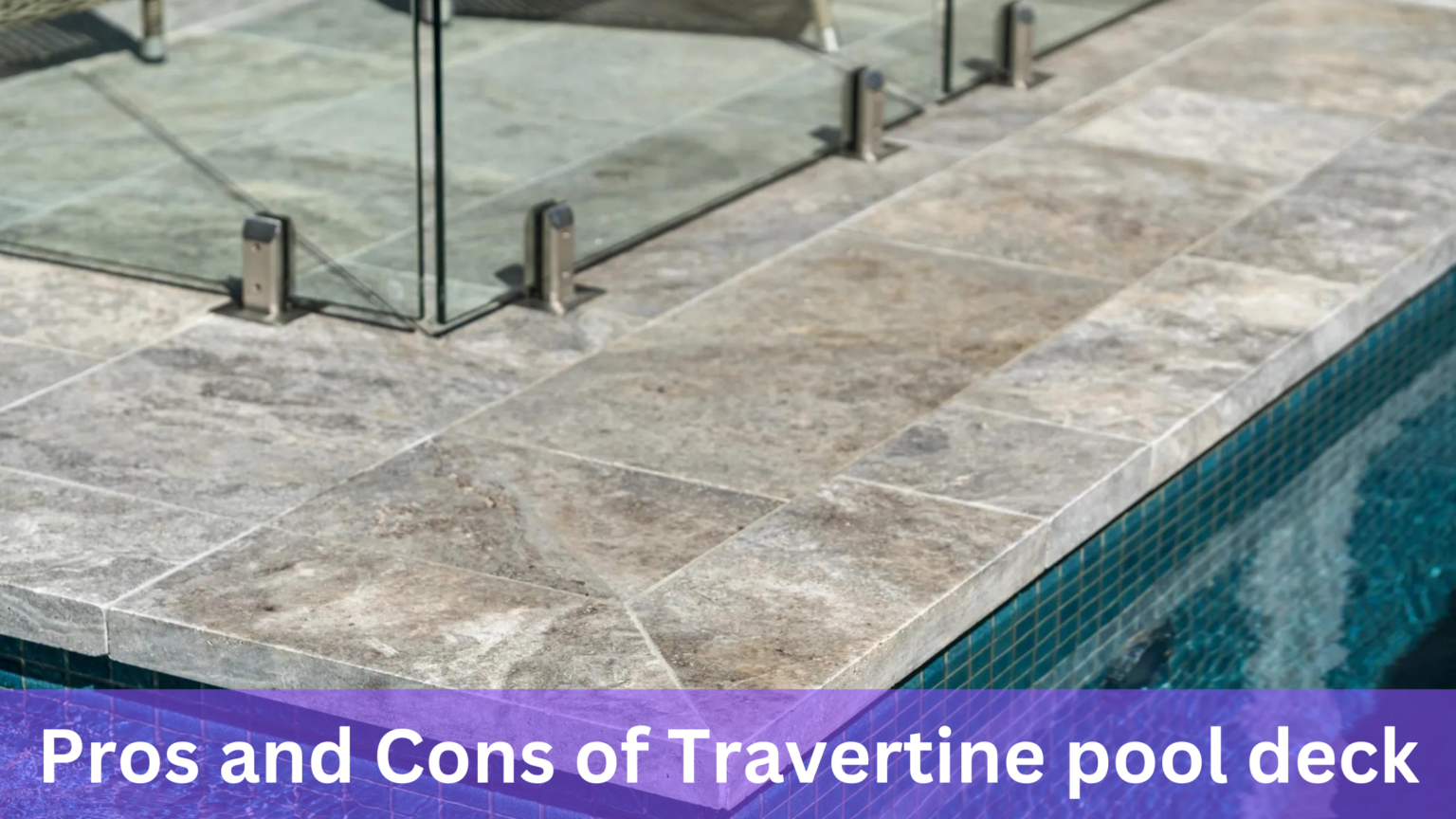
Choosing the right material for your pool deck can be daunting, with numerous options available.
Travertine is a popular choice, but is it best for your needs? Concerns about durability, maintenance, and cost often arise, leaving homeowners needing clarification.
This article explores the pros and cons of travertine for your pool deck, providing you with the essential information to make a confident, informed decision.
What is Travertine?
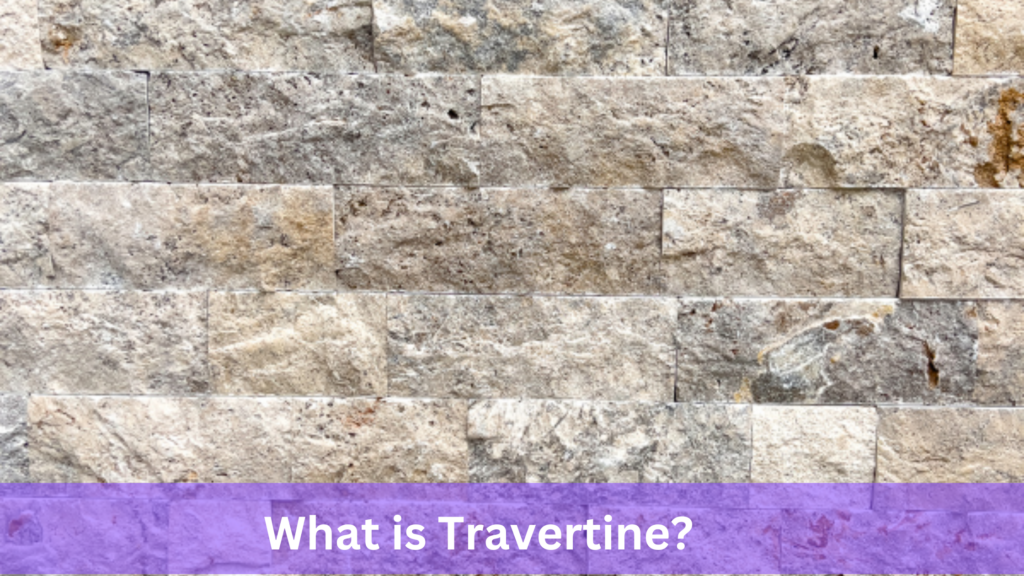
Travertine is a type of natural stone formed from mineral springs, particularly hot springs. This sedimentary rock is composed primarily of calcium carbonate and has a distinctive, porous structure.
Its unique appearance, characterised by subtle variations in colour and texture, makes it a popular choice for various architectural and decorative applications, including pool decks.
What sets Travertine apart is its historical significance and timeless appeal. Used extensively in ancient Roman architecture, including the iconic Colosseum, travertine has proven its durability and aesthetic charm over centuries.
Its natural beauty is characterized by shades of ivory, beige, and tan, with occasional hues of gold, brown, and rust, which allows it to blend seamlessly with outdoor environments.
Read our comprehensive guide on travertine for a more detailed exploration of this beautiful stone, including its types and extensive applications.
Pros of Using Travertine for Your Pool Deck
Travertine is a favoured material for pool decks due to its numerous advantages that enhance both functionality and aesthetics. Here are the key benefits in detail:
- Aesthetic Appeal: Travertine’s natural, earthy tones and unique patterns create an elegant and timeless look. Its ability to blend with various design styles, from rustic to modern, makes it a versatile choice for enhancing outdoor spaces.
- Heat Resistance: One of travertine’s standout features is its ability to remain cool underfoot, even in direct sunlight. This property ensures a comfortable surface for walking and lounging around the pool, preventing the discomfort associated with hot surfaces.
- Slip Resistance: Travertine’s natural texture provides excellent slip resistance, crucial for wet areas like pool decks. This reduces the risk of slips and falls, enhancing safety for everyone using the pool area.
- Durability: Travertine is known for its durability and ability to withstand harsh weather conditions, including extreme heat and cold. It resists cracking and fading, ensuring the pool deck maintains its beauty and functionality over time.
- Eco-Friendly: Travertine is an environmentally friendly option as a natural stone. Its extraction and processing have a lower environmental impact than synthetic materials, making it a sustainable choice for eco-conscious homeowners.
Cons of Using Travertine for Your Pool Deck
While travertine offers many benefits, it’s essential to consider its drawbacks to make an informed decision. Here are the key disadvantages in detail:
- Cost: Travertine is generally more expensive than other pool deck materials like concrete or pavers. The initial investment can be high, which may concern budget-conscious homeowners.
- Maintenance Requirements: Travertine requires regular maintenance to preserve its appearance and durability. Periodically sealing the stone protects it from stains and damage. This ongoing upkeep can be time-consuming and costly.
- Porosity: Travertine is a porous material, making it susceptible to absorbing water and other liquids. This characteristic can lead to staining and damage if spills are not promptly cleaned or if the stone is not adequately sealed.
- Weight: Travertine is a heavy material, which can complicate the installation process. A sturdy foundation is required to support its weight, potentially increasing the overall cost and complexity of the installation.
- Limited Colour Options: While travertine offers natural, earthy tones, the colour range is limited compared to other materials. Homeowners looking for a specific colour or a broader palette may find travertine’s options restrictive.
Comparison with Other Pool Deck Materials
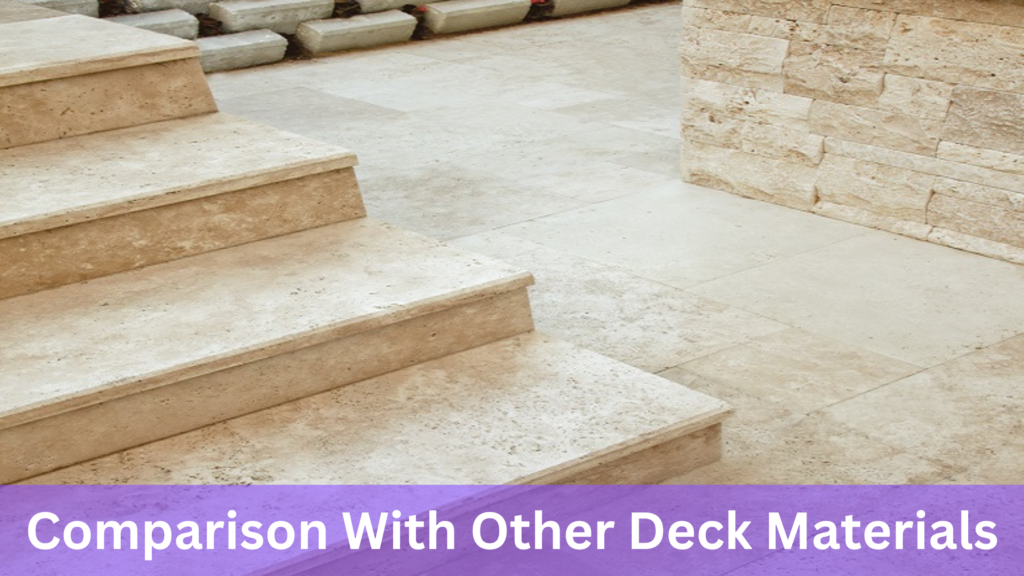
When choosing a pool deck material, comparing travertine with other popular options is essential to understand its advantages and disadvantages. Here are the key points of comparison:
- Concrete: Concrete is a widely used pool deck material for its affordability and versatility. It can be customised with various finishes, colours, and patterns. However, concrete tends to get very hot under the sun and can crack over time due to weather fluctuations, requiring frequent maintenance and repairs.
- Pavers: Pavers are another popular choice, offering a range of colours, shapes, and sizes. They are relatively easy to install and replace individually if damaged. While pavers are durable and slip-resistant, they can be prone to shifting and require regular weed control in the joints. They also do not stay as calm as travertine underfoot.
- Natural Stone Alternatives: Natural stones like granite offer similar aesthetic appeal and durability. Slate, however, can become slippery when wet, posing a safety risk. Granite is highly durable but significantly more expensive than travertine. Both alternatives require sealing to prevent staining and damage.
Is Travertine Right for You?
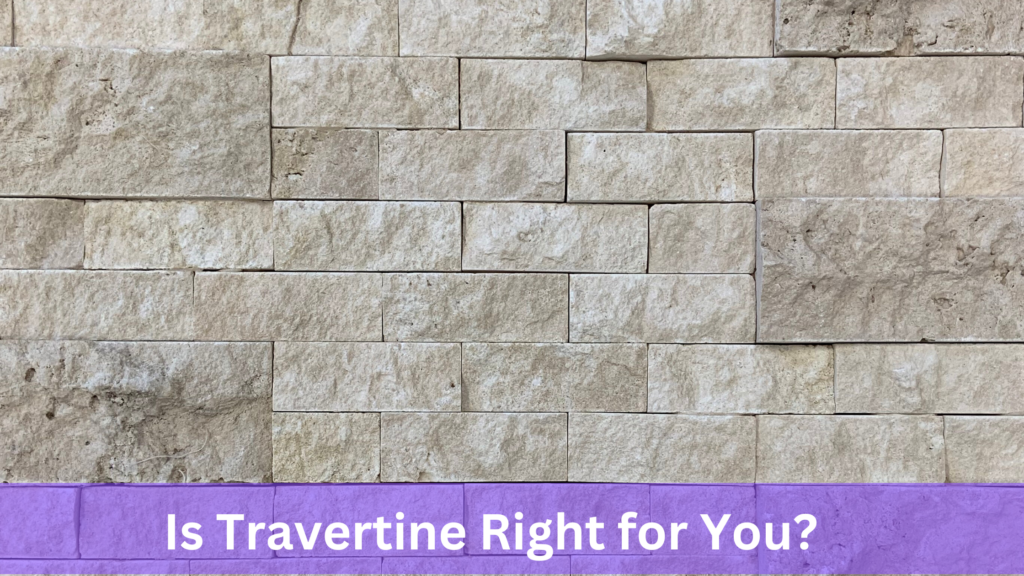
Choosing the suitable material for your pool deck involves considering your needs, preferences, and budget. Here are the key factors to determine if travertine is the right choice for you:
- Aesthetic Preferences: Travertine’s natural beauty and timeless appeal make it an excellent choice if you value a sophisticated, elegant look. Its earthy tones and unique patterns can complement various outdoor designs.
- Comfort and Safety: If staying cool underfoot and slip resistance are priorities, travertine excels in these areas. Its ability to remain calm even in direct sunlight and its naturally textured surface reduce the risk of slips and falls.
- Budget: Travertine tends to be more expensive than concrete or pavers. Consider whether the initial investment and ongoing maintenance costs fit within your budget.
- Maintenance Commitment: Travertine requires regular sealing and cleaning to maintain its appearance and durability. Travertine can be a long-lasting and beautiful option if you commit to this maintenance.
- Environmental Considerations: Travertine is an eco-friendly natural stone that is a good choice for environmentally-conscious homeowners who prefer sustainable building materials.
Tips for Maintaining a Travertine Pool Deck
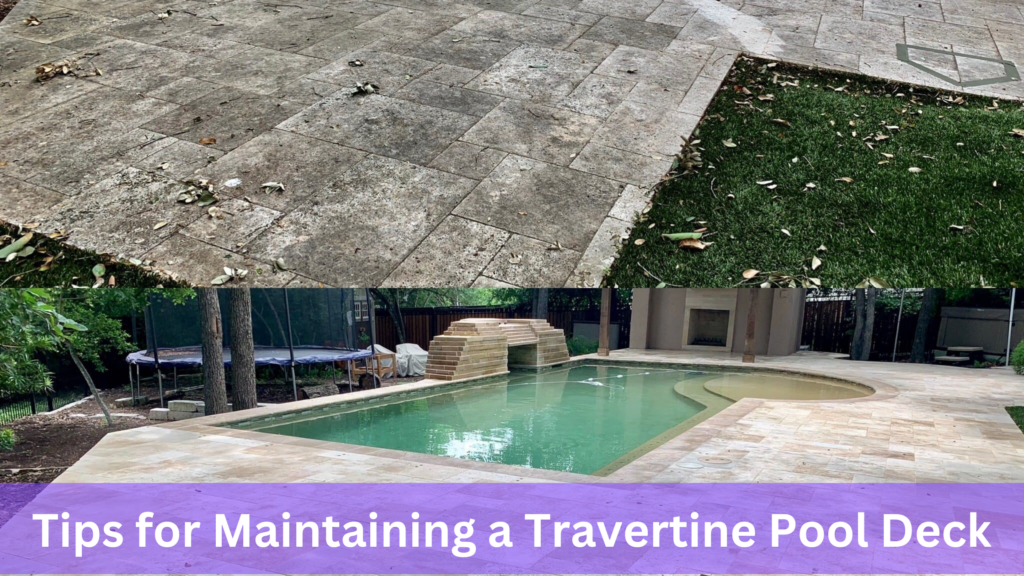
Proper maintenance of a travertine pool deck is essential to preserve its beauty and functionality. Here are some practical tips to help you keep your travertine pool deck in excellent condition:
- Regular Cleaning: Sweep the deck regularly to remove debris and dirt that can cause scratches. Use a mild soap and water solution for routine cleaning, and avoid harsh chemicals that can damage the stone.
- Sealing: Travertine is a porous material, so sealing is crucial to protect it from stains and water damage. Depending on the level of use and exposure to the elements, apply a high-quality sealer every one to two years. Ensure the surface is clean and dry before sealing.
- Stain Prevention: Promptly clean up spills to prevent staining. Use a pH-neutral cleaner to treat stains, and avoid acidic substances like vinegar or citrus-based cleaners, which can etch the stone.
- Addressing Damage: Inspect the deck regularly for signs of damage, such as cracks or chips. Small cracks can be repaired with a stone filler, while more significant damage may require professional attention.
- Protective Measures: Use furniture pads to prevent scratches from heavy furniture. Also, avoid dragging heavy objects across the deck, which can cause surface damage.
Conclusion
Travertine offers beauty, comfort, and durability but requires more investment and maintenance. Evaluate your priorities and resources to see if it suits your needs.
Ready to elevate your pool area? Contact Splendour In Stone Melbourne today to explore our exquisite travertine options and expert installation services.
More To Explore
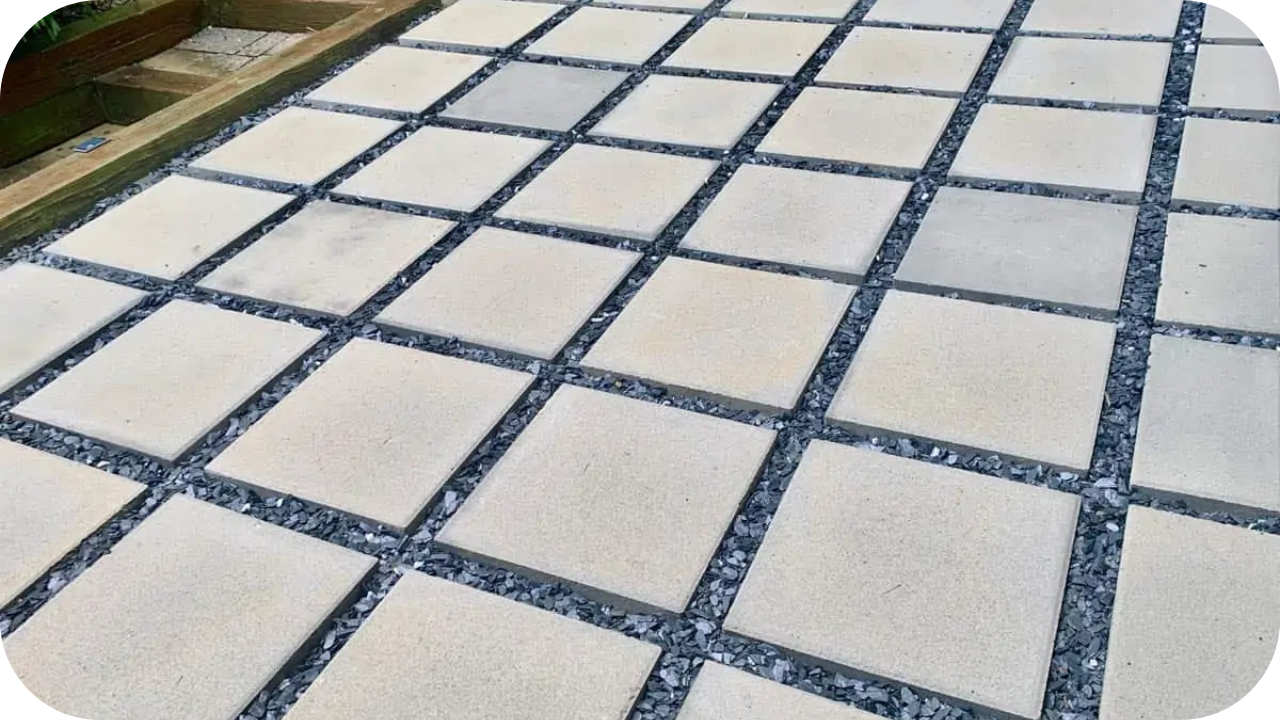
Top Outdoor Paving Ideas for Aussie Backyards
Are you ready to transform your Aussie backyard with stunning paving ideas? Whether you’re looking to create a stylish outdoor entertaining area, a functional pathway,
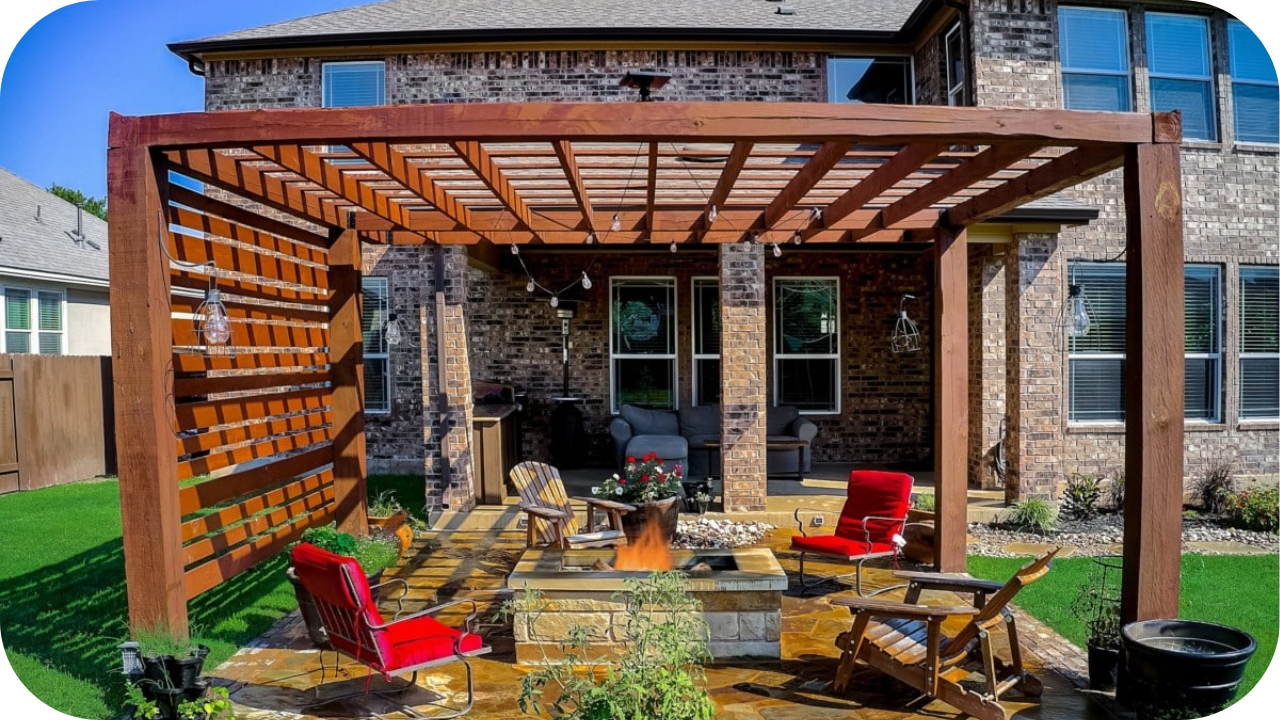
Small Backyard? Here’s How to Maximise with Stone
Struggling to make the most of your small backyard space? Many homeowners with limited outdoor areas feel restricted when it comes to design. But what


